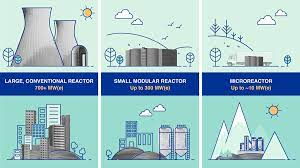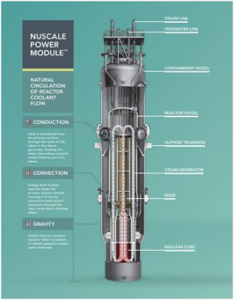Can small modular nuclear reactors help India achieve net-zero?
Relevance:
GS Paper-3
- Developments and their applications and effects in everyday life.
- Indigenization of technology and developing new technology.
Why in news?
The world’s quest to decarbonize itself is guided, among other things, by the UN Sustainable Development Goal 7: “to ensure access to affordable, reliable, sustainable and modern energy for all”.
Challenges of decarbonization:
- The transition from coal-fired power generation to clean energy poses major challenges, and there is a widespread consensus among policymakers in several countries that solar and wind energy alone will not suffice to provide affordable energy for everyone.
- According to the International Energy Agency, the demand for critical minerals like lithium, nickel, cobalt, and rare earth elements, required for clean-energy production technologies, is likely to increase by up to 3.5 times by 2030.
- This jump poses several global challenges, including the large capital investments to develop new mines and processing facilities.
- The environmental and social impacts of developing several new mines and plants in China, Indonesia, Africa, and South America within a short time span, coupled with the fact that the top three mineral-producing and mineral-processing nations control 50-100% of the current global extraction and processing capacities, pose geopolitical and other risks.
The issues with nuclear power:
- Nuclear power plants (NPPs) generate 10% of the world’s electricity and help it avoid 180 billion cubic metres of natural gas demand and 1.5 billion tonnes of CO2 emissions every year.
- NPPs are efficient users of land and their grid integration costs are lower than those associated with variable renewable energy (VRE) sources because NPPs generate power 24×7 in all kinds of weather.
- Nuclear power also provides valuable co-benefits like high-skill jobs in technology, manufacturing, and operations.
- Conventional NPPs have generally suffered from time and cost overruns. As an alternative, several countries are developing small modular reactors (SMRs) — nuclear reactors with a maximum capacity of 300 MW — to complement conventional NPPs.
- SMRs can be installed in decommissioned thermal power plant sites by repurposing existing infrastructure, thus sparing the host country from having to acquire more land and/or displace people beyond the existing site boundary.
Advantages of SMRs:
- SMRs are designed with a smaller core damage frequency and source term (a measure of radioactive contamination) compared to conventional NPPs. They also include enhanced seismic isolation for more safety.
- SMR designs are also simpler than those of conventional NPPs and include several passive safety features, resulting in a lower potential for the uncontrolled release of radioactive materials into the environment.
- The amount of spent nuclear fuel stored in an SMR project will also be lower than that in a conventional NPP.
- Studies have found that SMRs can be safely installed and operated at several brownfield sites that may not meet the more stringent zoning requirements for conventional NPPs.
- Accelerating the deployment of SMRs under international safeguards, by implementing a coal-to-nuclear transition at existing thermal power-plant sites, will take India closer to net-zero and improve energy security because uranium resources are not as concentrated as reserves of critical minerals.
- Since SMRs are mostly manufactured in a factory and assembled on site, the potential for time and cost overruns is also lower.
- Further, serial manufacture of SMRs can reduce costs by simplifying plant design to facilitate more efficient regulatory approvals and experiential learning with serial manufacturing.
Integration of SMRs with the national grid:
- India’s Central Electricity Authority (CEA) projects that the generation capacity of coal-based thermal power plants (TPPs) in India must be increased while enhancing the generation capacity of VRE sources.
- The CEA also projects that TPPs will provide more than half of the electricity generated in India by 2031-2032 while VRE sources and NPPs will contribute 35% and 4.4%, respectively.
- Since India has committed to become net-zero by 2070, the country’s nuclear power output needs a quantum jump.
- Since the large investments required for NPP expansion can’t come from the government alone, attracting investments from the private sector (in PPP mode) is important to decarbonize India’s energy sector.
Way forward:
- The Atomic Energy Act will need to be amended to allow the private sector to set up SMRs.
- To ensure safety, security, and safeguards, control of nuclear fuel and radioactive waste must continue to lie with the Government of India.
- The government will also have to enact a law to create an independent, empowered regulatory board with the expertise and capacity to oversee every stage of the nuclear power generation cycle.
- The security around SMRs must remain under government control, while the Nuclear Power Corporation can operate privately-owned SMRs during the hand-holding process.
- Finally, the Department of Atomic Energy must improve the public perception of nuclear power in India by better disseminating comprehensive environmental and public health data of the civilian reactors, which are operating under international safeguards, in India.





